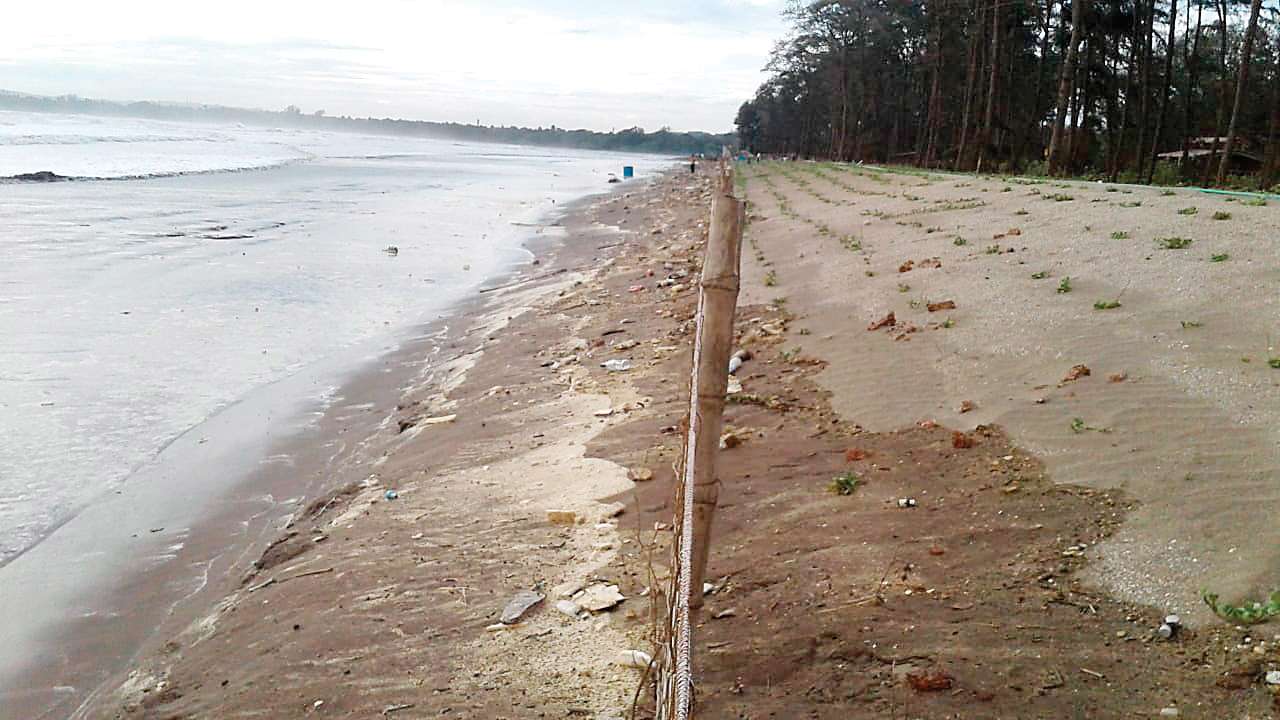
As concerns rise over Mumbai's shorelines being affected by rising water levels, the Bhatye beach in Ratnagiri has become the first in Maharashtra to become a climate resilient beach.
The beach has an artificial sand dune with vegetation as a line of defense against rising sea-level and high tides, which erode seashores, including the Dadar-Mahim seashore in Mumbai. Such interventions will mitigate the impact of rising sea levels and storm surges in areas on the coast.
The Maharashtra Maritime Board (MMB), which has executed the project, is now planning to undertake work at 10 more sites across the coastline like Madh in Mumbai using similar interventions.
"At Bhatye, we have created a 500 meter artificial sand dune with vegetation to serve as a line of defense against rising tides. This will serve as protection from extreme climate by working as a buffer from cyclones and rising sea levels by reducing the energy and dissipating the impact. There is a line of natural vegetation after the dune, which serves as another line of defense. This is an attempt to make it climate resilient for the future," said a senior MMB official.
Last year, waves had lashed the around 2km long beach, even uprooting the trees at the extreme end. The efficacy of the artificial dune, work on which was launched in January, will be tested during the monsoons.
He added that while the artificial dune, which is around five meters tall and 40 meters wide, has been constructed on the southern end, an around 400 meter natural dune exists on the northern side. The Bhatye beach is around one-and-half km long and 150 meters wide during the lower tide.
This Rs 85 lakh project was completed through a grant from the Asian Development Bank (ADB) under technical assistance from the Climate Resilient Coastal Protection Management Program. The ADB has borne the entire cost of the project, minus the tax component. The dune has been fenced off to prevent people and vehicles from accessing it.
"These interventions are softer, eco-friendly and aesthetic than the use of tetrapods. They involve less civil work with just sand being deposited and varieties of local plants being planted and watered," the official explained.
The beach already has a natural dune, which measures around 400 meters at the northern end. The MMB plans to take up similar work on 10 sites under the second tranche of the ADB-funded Sustainable Coastal Protection and Management Investment Program (SCPMIP) project, which is expected to be launched in end 2020 or 2021. The SCPMIP aims at controlling erosion at vulnerable spots like beaches and sea-shores due to tidal waves and currents through environment-friendly soft solutions.
"Such projects can be undertaken at sites, which have low to medium erosion. This may cover locations like Madh in Mumbai as it is a reasonably stable beach," the MMB official said. However, the challenge is getting access to good quality sand.
An MMB study has predicted a 0.38 meter rise in sea levels across Maharashtra by 2050. Its shoreline management plan (SMP) has suggested that constructions near the coast in Mumbai must rise to a minimum of 7.59 meters above mean sea levels to withstand storm surges and floods.
Maharashtra has around 100 beaches and 720km coastline spread across seven districts of Mumbai city and suburbs, Thane, Palghar, Raigad, Ratnagiri, and